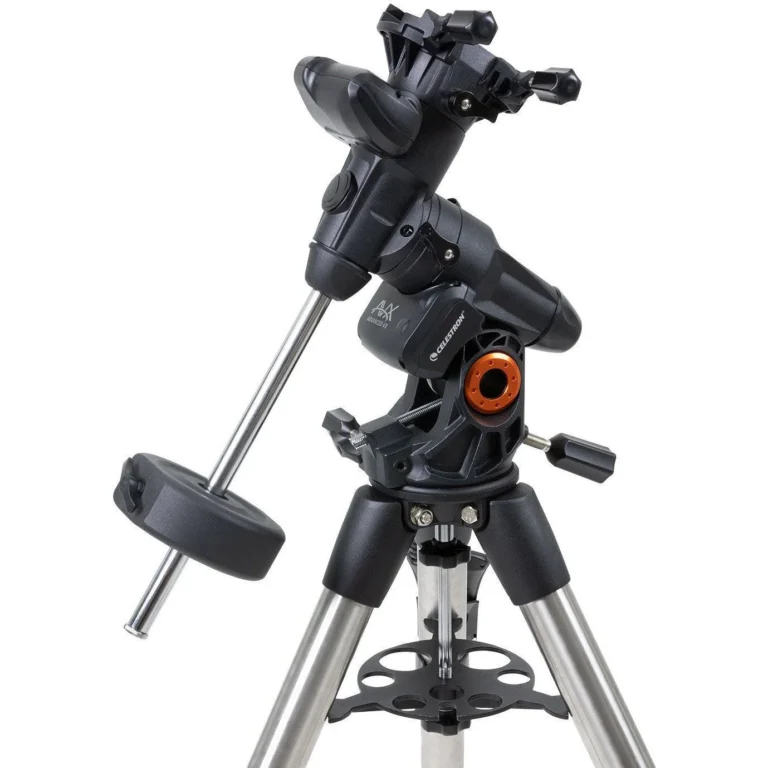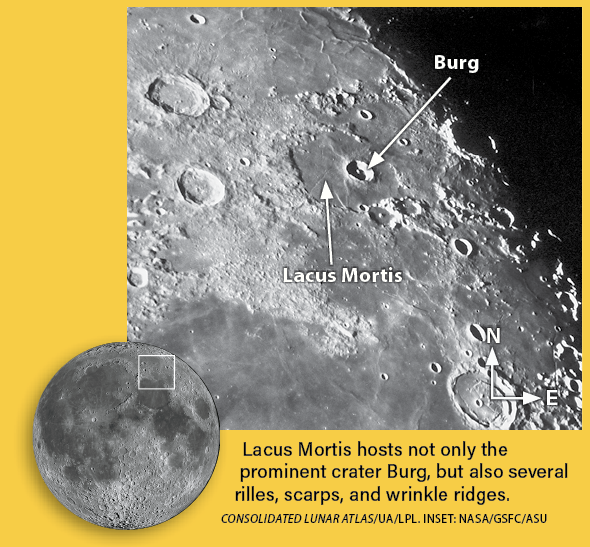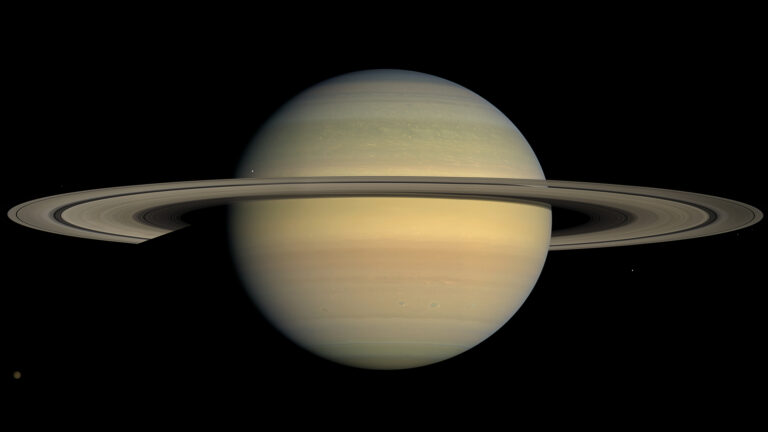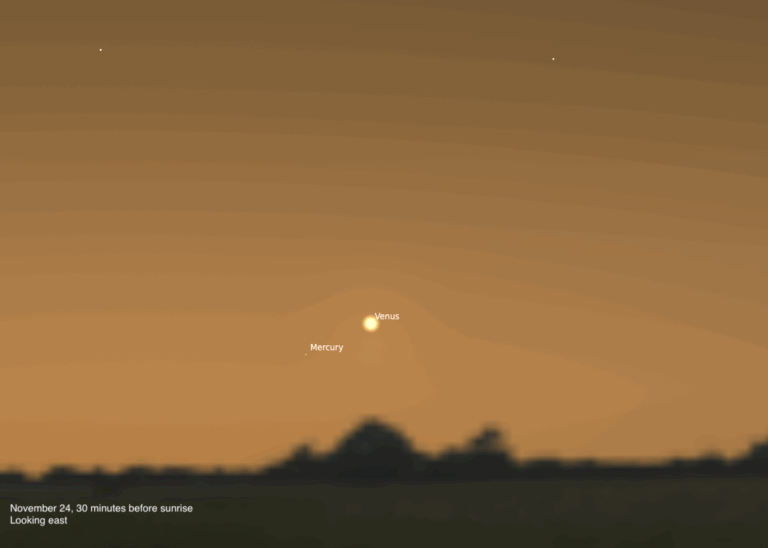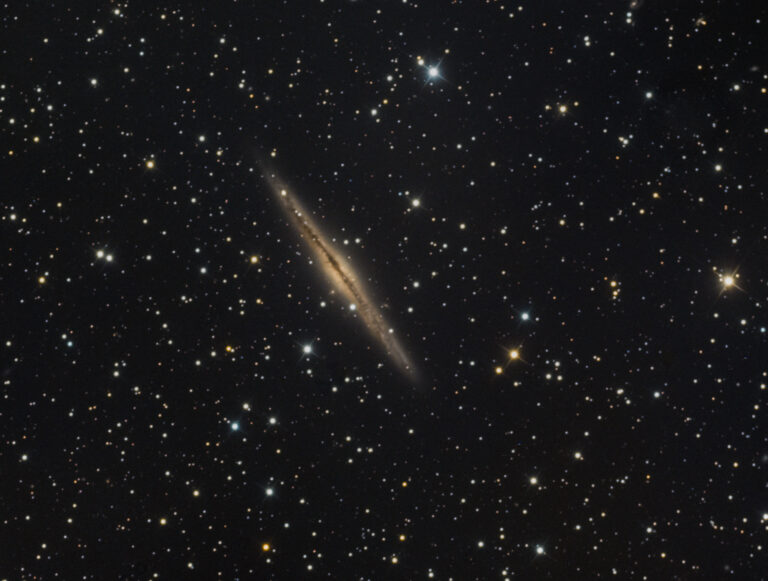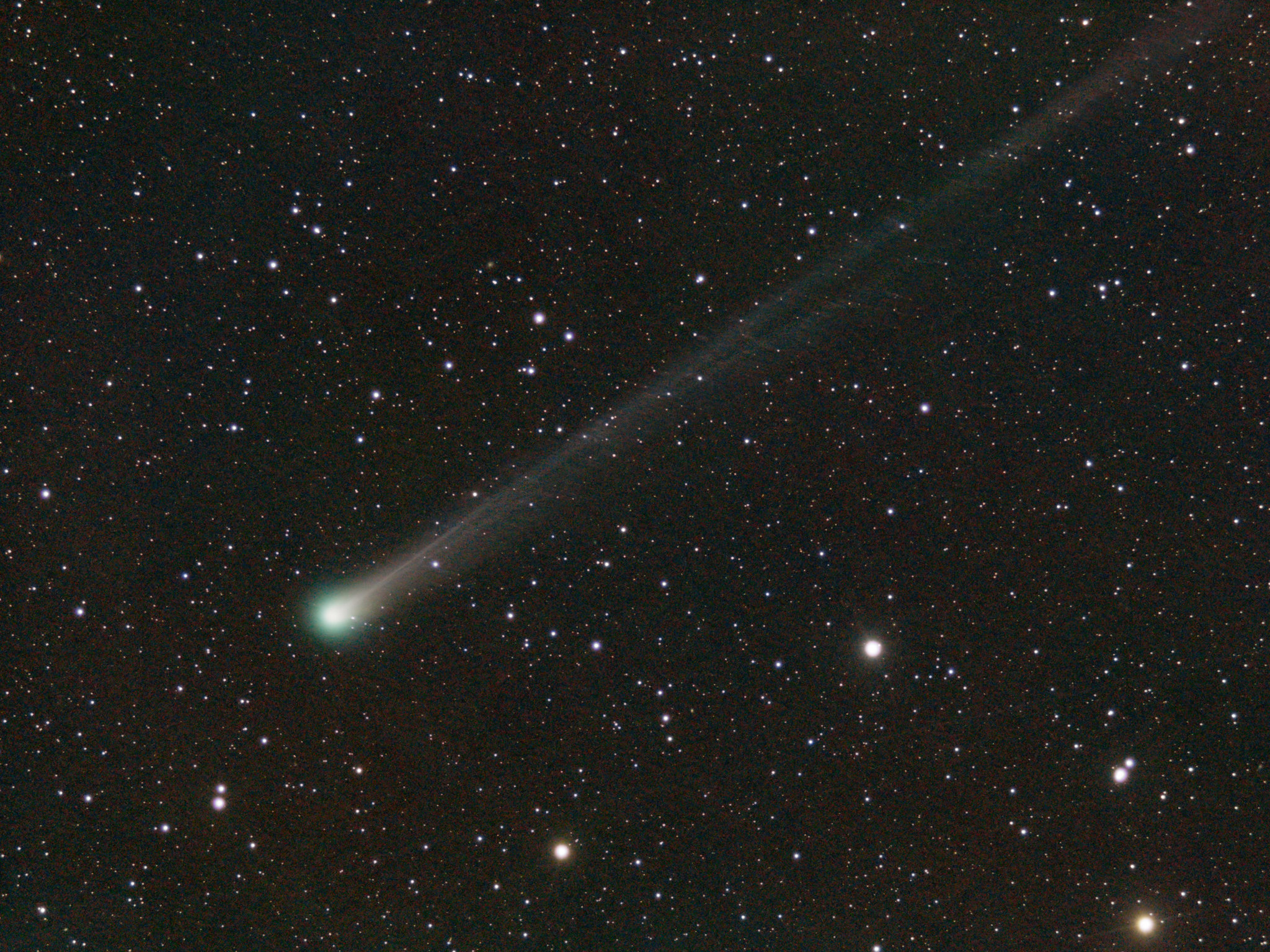
Key Takeaways:
- October 20, 2025, marks the peak of the Orionid meteor shower, coinciding with a New Moon phase, expected to yield approximately 20 meteors per hour with its radiant located near Betelgeuse in Orion.
- Comet C/2025 A6 (Lemmon) reaches its closest approach to Earth at 28.6 million miles, presenting as a 5th-magnitude object observable in both the morning and evening skies within the constellation Boötes.
- A close conjunction between Mercury and Mars will be visible in the evening sky, with Mercury positioned approximately 2 degrees south of Mars, both appearing low on the western horizon.
- A three-hour transit of Titan across Saturn's disk is scheduled, beginning at 6:42 P.M. EDT, with a potential, albeit uncertain, graze of Titan's shadow near Saturn's north pole observable towards the transit's conclusion.
Looking for a sky event this week? Check out our full Sky This Week column.
October 20: Visit the Pleiades
Today is a busy day! Mercury passes 2° south of Mars at 2 A.M. EDT — we’ll observe the pair in the evening sky, along with a Titan transit of Saturn.
But first, the Orionid meteor shower peaks as the Moon reaches New phase at 8:25 A.M. EDT. Additionally, Comet C/2025 A6 (Lemmon) passes closest to Earth today, skimming some 28.6 million miles (46 million kilometers) from our planet.
Let’s start with the Orionids, best viewed in the early-morning hours before sunrise. The shower’s radiant, the point from which its meteors appear to emanate, is highest in the sky around 5:30 A.M. local daylight time. Step outside and look south to locate the constellation Orion; the radiant is just above the Hunter’s red giant shoulder, Betelgeuse.
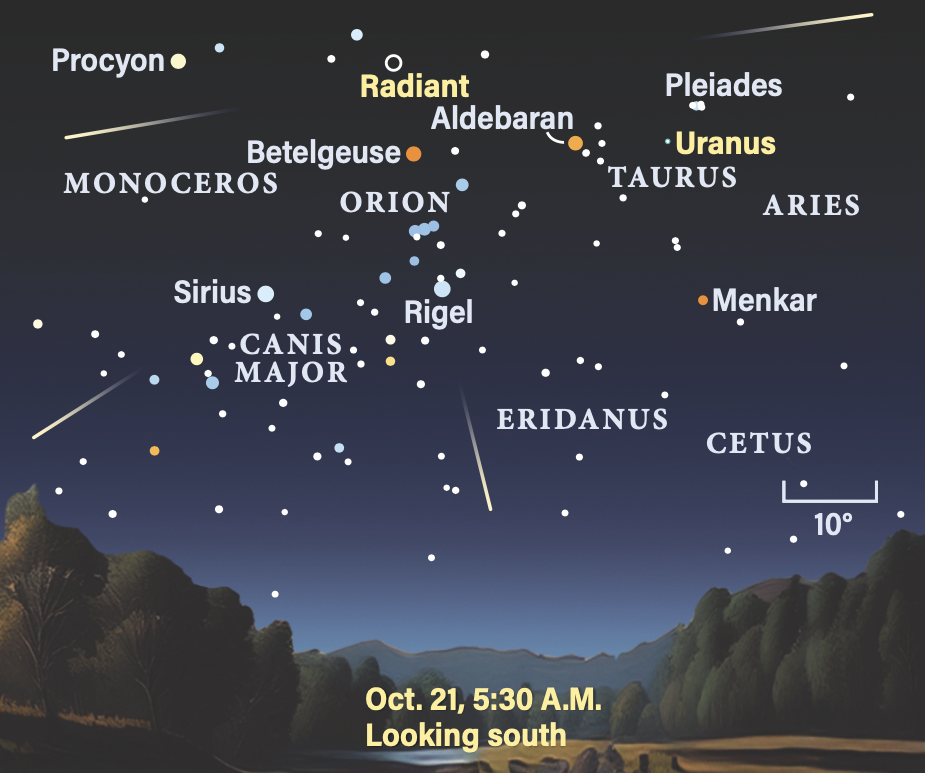
Now, scan the sky to either side of this point — meteors will have the longest trains about 40° away from the radiant. Some 20 meteors per hour are expected this morning, so it’s worth taking a look.
If you’ve also got a clear northeastern horizon, Comet Lemmon is some 4° high by 6 A.M. local daylight time. The comet is now 5th magnitude, readily visible through binoculars, a telescope, and in smartphone images. It’s roughly even in altitude with blazing Venus, visible in Virgo, but Lemmon lies in Boötes, nearly 40° northeast of the planet. This morning the comet is only 1.7° from magnitude 3.6 Rho (ρ) Boötis. Lemmon is rising but the sky will quickly start growing brighter as sunrise approaches.

You can also catch Comet Lemmon in the evening sky, when it is higher — an hour after sunset, it is still some 20° high in the west, now about 2.5° south of Rho Boo. Look for it to the upper right of bright Arcturus, Boötes’ magnitude –0.1 alpha star.
Earlier — half an hour after sunset — Mars and Mercury hang near the western horizon, about 4° high. The two planets are just over 2° apart, with brighter Mercury (magnitude –0.2) closer to the horizon, and Mars (magnitude 1.5) to its upper right. Use binoculars to orient yourself on Mercury, then skim north to find fainter Mars.
Finally, close out the evening with a transit of Titan across Saturn — possibly with its shadow. Although October 6 was billed as the last shadow transit of this series, there is a small chance a tiny portion of Titan’s shadow may be visible to some observers tonight. According to Astronomy contributing editor Martin Ratcliffe, the prediction appears to be near the limit of accuracy of planetarium programs, so while a slight graze of Titan’s shadow near Saturn’s north pole could be visible, it also may not happen.
Saturn is located in far northeastern Aquarius, near that constellation’s border with Pisces. At magnitude 0.7, it’s the brightest point of light in that region of the sky. Titan’s transit begins at 6:42 P.M. EDT, best seen from the Eastern and Central time zones. The moon is moving slowly, taking three hours to reach halfway across the disk. It finally approaches the northwestern limb shortly after midnight in the Eastern time zone (12:22 A.M. EDT on the 22nd), and is clear of the planet’s disk 20 minutes later.
If the shadow is visible, it will just graze Saturn’s north pole. Visibility will greatly depend on your location and local seeing conditions. As Titan is reaching end of its transit at 12:22 A.M. EDT (again, note the time: the 22nd in the Eastern time zone only), the shadow may appear as a small, semicircular divot at the pole. Take a look, and take some photos or video if you can — and let us know if you view a transit!
Sunrise: 7:17 A.M.
Sunset: 6:11 P.M.
Moonrise: 7:29 A.M.
Moonset: 6:01 P.M.
Moon Phase: Waxing crescent (1%)
*Times for sunrise, sunset, moonrise, and moonset are given in local time from 40° N 90° W. The Moon’s illumination is given at 10 P.M. local time from the same location.

